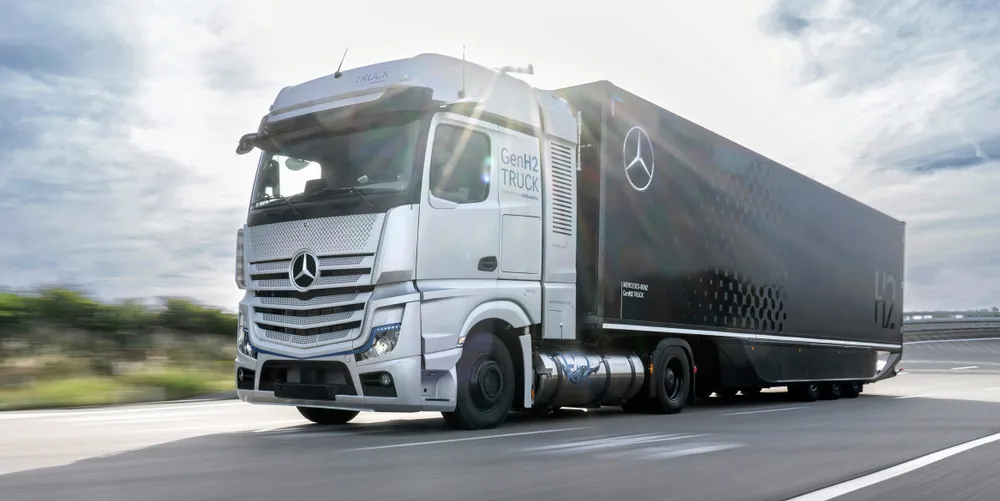'We prefer liquid hydrogen for trucks' | Daimler begins test of LH2 prototype with aim to sell 1,000km-range lorries by 2030
Company is also working on ‘subcooled’ liquid H2 process that would enable even longer journeys on a single tank

But the German company says it “prefers liquid hydrogen in the development of hydrogen-based drives”.
“In this aggregate state the energy carrier has a significantly higher energy density in relation to volume compared to gaseous hydrogen,” it explains. “As a result, more hydrogen can be carried, which significantly increases the range and enables comparable performance of the vehicle with that of a conventional diesel truck.”
“Thanks to the particularly good insulation of the vehicle tanks, the hydrogen can be kept at temperature for a sufficiently long time without active cooling,” the company says.
“The development objective of the series-ready GenH2 Truck is a range of up to 1,000km and more,” it adds. “This makes the truck suitable for flexible and demanding applications, especially in the important segment of heavy-duty long-haul transport.
“The start of series production for hydrogen-based trucks is planned for the second half of the decade.”
Subcooled liquid hydrogen
“The goal is to collaborate with other companies and associations as possible to develop their own refuelling and vehicle technologies that apply the new liquid-hydrogen standard and thereby establish a global mass market for the new process.”
Daimler Truck was spun off last year from the Mercedes-Benz group, which is still its biggest shareholder, owning 30.01% of the new company.
The business sells trucks under five brands — Mercedes-Benz, India-focused BharatBenz, Asia-based Mitsubishi Fuso, US manufacturers Freightliner and Western Star — while it also produces buses under the brands Mercedes-Benz, Setra, BharatBenz, Fuso and Thomas Built.
(Copyright)